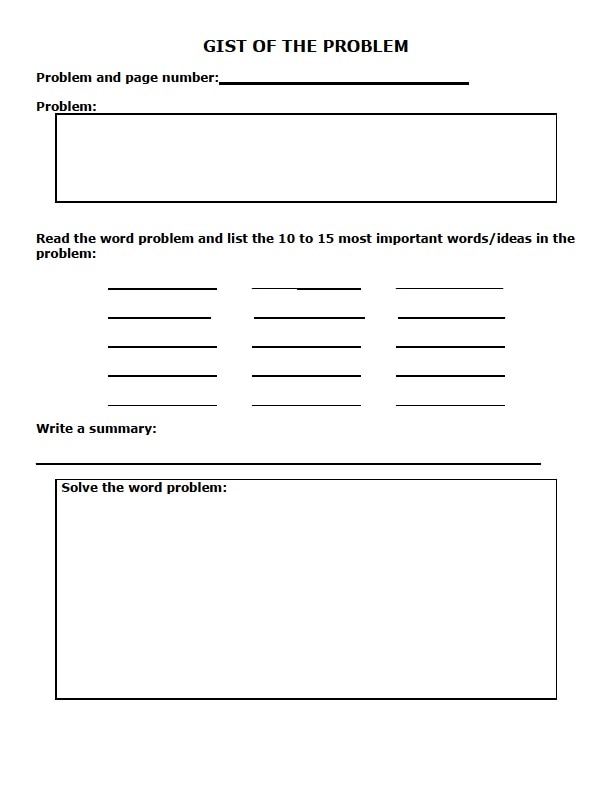25. GIST OF THE PROBLEM FOR MATH (Writing, Feedback, Questioning)
Description: Students use this activity to identify the key elements and, by extension, the non-essential parts of a word problem.
Application: Use GIST of the Problem to discern essential and non-essential information for word problems.
Process: Locate or create numerous word problems for students to solve. Hand Gist of the Problem Template (addendum below) to students or show the format and allow them to create it on their own paper. Provide a word problem for each student to work individually or with a partner. Direct students to read the problem, strike through non-essential words, and transfer the most important words to the GIST template. Tell students to complete the template by summarizing and solving the word problem.
Description: Students use this activity to identify the key elements and, by extension, the non-essential parts of a word problem.
Application: Use GIST of the Problem to discern essential and non-essential information for word problems.
Process: Locate or create numerous word problems for students to solve. Hand Gist of the Problem Template (addendum below) to students or show the format and allow them to create it on their own paper. Provide a word problem for each student to work individually or with a partner. Direct students to read the problem, strike through non-essential words, and transfer the most important words to the GIST template. Tell students to complete the template by summarizing and solving the word problem.
Reference and/or for more information:
25. Gist of the Problem for Math
Cunningham, J. Generating interaction between schemata and text. In J. Niles & L. Harris(Eds.), New inquiries in reading research and instruction, thirty-first yearbook of the National Reading Conference (pp. 42-47). Washington, DC: National Reading Conference
25. Gist of the Problem for Math
Cunningham, J. Generating interaction between schemata and text. In J. Niles & L. Harris(Eds.), New inquiries in reading research and instruction, thirty-first yearbook of the National Reading Conference (pp. 42-47). Washington, DC: National Reading Conference

